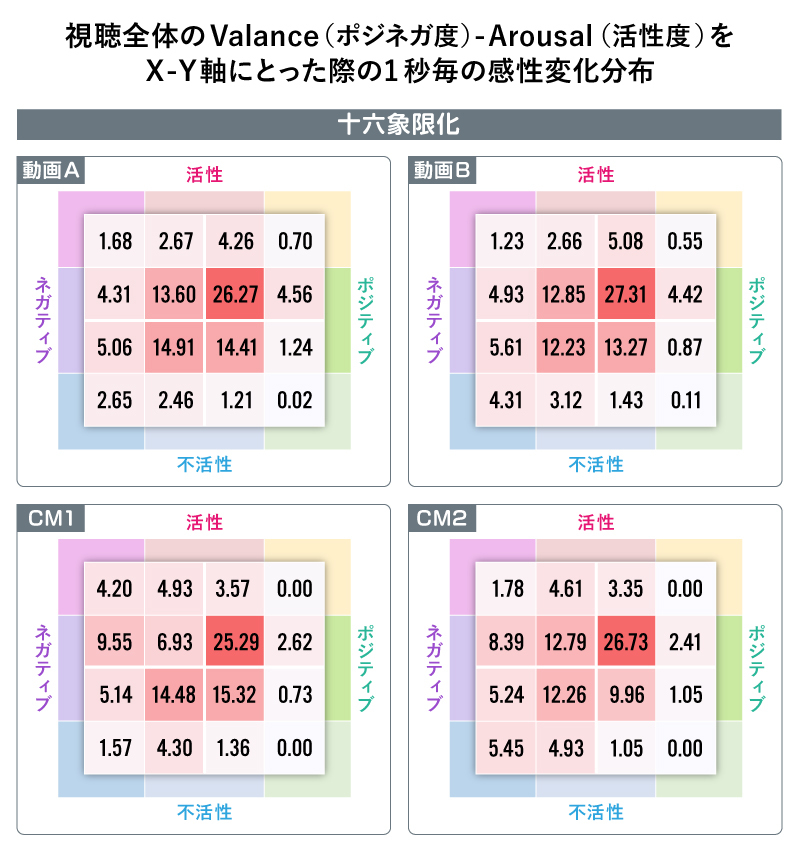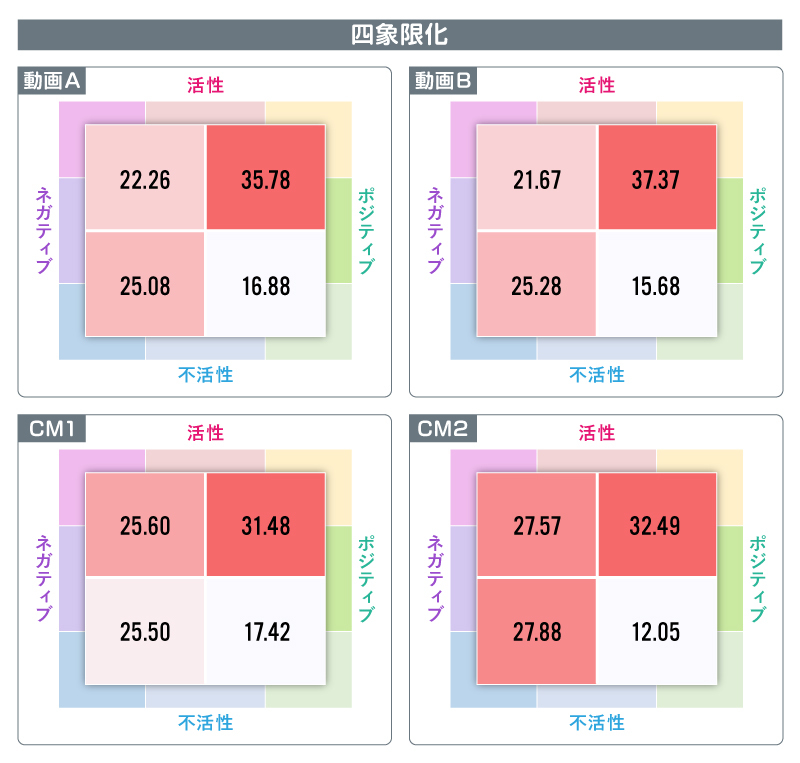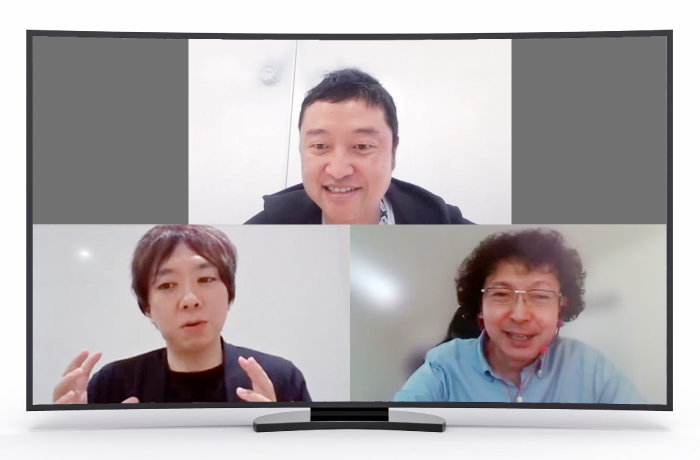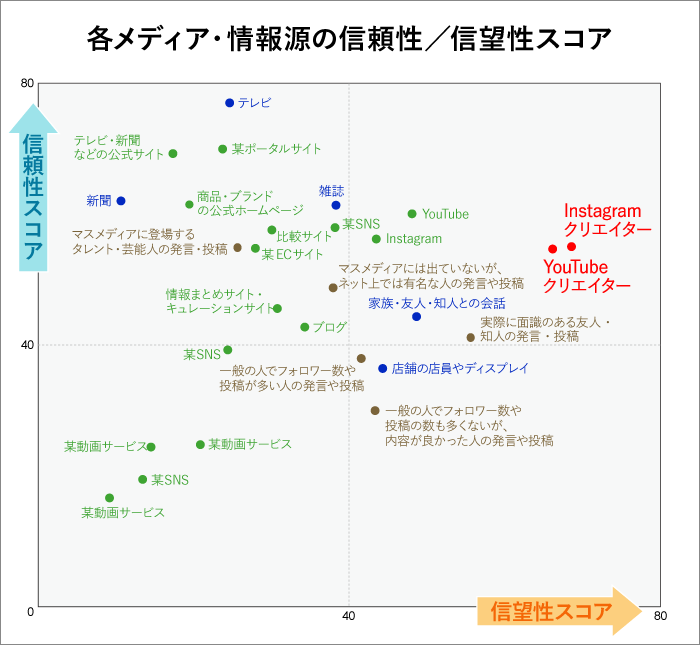In the second part, we asked Mr. Ichikawa for his insights on the results of the UUUM × Dentsu Inc. joint research project. Furthermore, he shared his thoughts on the future of YouTube creators in the era of living with COVID-19.


Results from brainwave measurements utilizing "Brain Behavior Insight," introduced in the second installment.
Tamura: This survey was conducted with the hope of visualizing, even partially, the underlying factors behind credibility. However, users were leaning forward and watching the videos more intently than we had imagined. The difference between concentration and relaxation was also significant.
Tamura: We conducted this survey hoping to visualize even a little of what lies behind trustworthiness. Users were leaning forward while watching the video more than we imagined. While the difference between concentration and relaxation was significant, the upper (concentration) portion was high, and overall, the percentage in the positive/active zone was high. The comparison with the reference commercial video we tried was also surprising.The high-quality commercial naturally achieved an impressive zone ratio, but the YouTube video surpassed it. Brainwave data helped unravel part of why we keep watching YouTube videos with such interest.
Ichikawa: We've learned that influencer content is highly effective at prompting people to take action. I believe this study also scientifically validated the "credibility" aspect from our first survey.
Amano: Are there any themes you'd like to explore further through future research?
Ichikawa: I know it's challenging, but I'd say attribution—measuring each media channel's contribution to conversions. As the digital shift advances, the influence of influencer and creator content is also changing. At least for me, I'm buying things more often based on information from YouTube, Instagram, and Twitter.
My wife works in a completely different field, but she researches products daily on e-commerce sites, checks reviews on YouTube and Twitter, and verifies prices and comments on comparison sites before deciding to buy. I feel the information obtained online has a truly significant influence.
That's precisely why I want to continue researching how much influencer and YouTube creator content actually influences people's actions. It would be great if we could quantify influencer impact from various angles—not just purchase attribution, but also aspects like enhancing product understanding.
Amano: Attribution is also an eternal challenge for the advertising industry. While it has become easier to track as communication shifts to digital, it has also grown more complex. It's a critically important theme.
Considering YouTube Content in the Age of Living with COVID-19
Amano: Now, let's discuss YouTube trends during the pandemic era and the future for YouTube creators. 2020 saw significant impacts across all advertising communication due to the novel coronavirus. How do you perceive the positive and negative aspects?
Ichikawa: I feel the accelerated digital shift created an environment where YouTube creators' and influencers' content became easier to access.
For example, take Marina Takewaki, a "home workout YouTuber" affiliated with UUUM. She's a creator who shares information to enjoy fitness with her viewers. Just as her subscriber count was rapidly growing, the pandemic led to increased time spent at home. Viewers seeking to combat a lack of exercise began watching her content and working out together, causing her view counts to surge nearly fivefold. This illustrates how many creators saw a significant increase in their content's view counts.
On the other hand, the negative impact felt across the advertising industry as a whole also spread to creators. Companies canceled ads, became cautious about when to run them, and various other effects occurred.
Furthermore, restrictions have also arisen in content production itself. Like TV show location shoots, production activities now require careful consideration of the three Cs (closed spaces, crowded places, close-contact settings) and social distancing. Collaboration has also become difficult. While the appeal of YouTube content was its relative lack of physical constraints, it now seems that content cannot be accepted by the public without imposing restrictions.
Amano: A notable trend during the pandemic has been the entry of well-known celebrities into YouTube. This could lead to competition for time with existing YouTube creators. How does UUUM view this situation?
Ichikawa: Without being overly optimistic, we don't view the entry of famous celebrities as "competition." Rather, we want to take steps to enable collaboration and coexistence. One answer to this is our capital and business alliance with Yoshimoto Kogyo. If new collaborations emerge, the breadth of content will expand. We intend to deepen these partnerships going forward.
Amano: For creators aiming to grow their popularity, what kind of support does UUUM plan to provide and how do you intend to leverage your strengths?
Ichikawa: Regarding production, we've previously involved production companies and creative boutiques to brainstorm concepts together. For creators seeking this kind of support, we plan to further strengthen our systems.
UUUM itself also aims to further enhance its capabilities as a production company. Additionally, we relocated our headquarters from Roppongi Hills to Tokyo Midtown at the end of March 2020. This move has increased the number of studios available for creators to use, and the sets have been upgraded.
Tamura: Do you provide similar support to influencers outside of YouTube creators?
Ichikawa: Yes. We tailor the support we provide based on the creator. For example, we support the social media activities of the idol group "Kanjuku," assist Hinata, who became famous on TikTok, with her YouTube activities, and help creators and agencies according to their specific needs. We aim to cover everything related to influencer marketing, not just YouTube.
Amano: During the pandemic, the social role of YouTube creators also came under the spotlight. For example, HIKAKIN is very active in social initiatives, right? Could you tell us about the social role of YouTube creators who have influence over younger audiences?
Ichikawa: Broadly speaking, there are two contexts: the creator and UUUM. HIKAKIN held a dialogue with the Tokyo Governor to raise awareness about the risks of COVID-19, but that activity was initiated by HIKAKIN himself.
UUUM also consciously considers creators' social contributions. During the self-restraint period under the state of emergency declaration, we ran the "Stay Home" campaign. With the cooperation of participating creators, we shared the message to stay home and avoid going out as much as possible through videos and Twitter. Going forward, if our ideas align with those of creators, we want to continue contributing to society through information dissemination.
Amano: Finally, is there a message you'd like to convey to advertising clients and agencies to foster better collaboration?
Ichikawa: Our core message is simply, "Let's create interesting content together." As mentioned in the first part, many people are very familiar with traditional talent but still unfamiliar with influencers. We want to focus our efforts on initiatives to resolve this issue and on disseminating the necessary information. On that basis, we'd be delighted to develop content as one team.
When advertising clients, agencies, and creators each approach content creation from their own perspectives, conflicts often arise. But when we understand each other's positions and engage in deep discussions, there comes a moment when everyone smiles. Content that captures that moment truly tends to see view counts jump far beyond the norm.
My original motivation for entering the advertising industry was simply the desire to create content that makes people laugh and stirs their emotions—joy, anger, sorrow, and delight. I believe the more people involved, the more enjoyable the content becomes. I sincerely hope we can create together.


















